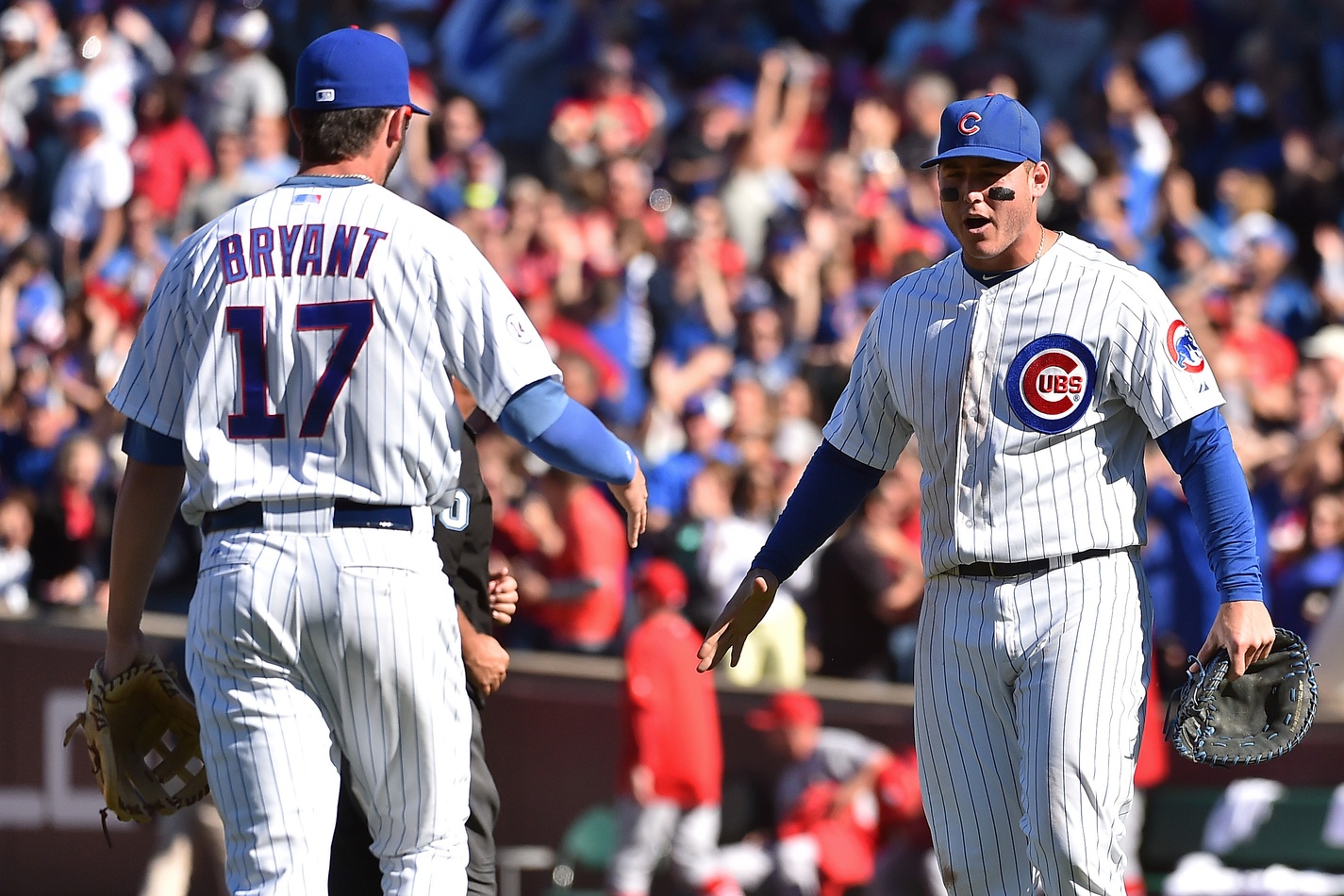The Cubs strike out a lot. They strike out a ton. This shouldn’t be news, but in case you’ve been checking the scores and asking as few questions as possible, there it is. With a league-high 24.4-percent strikeout rate, the Cubs are sprinting headfirst toward the highest strikeout rate in history for a playoff team. Given the (admittedly tenuous) evidence that contact rate is a predictor of playoff success in this modern, strikeout-mad era (31 of the last 42 series have been won by the team with the higher regular-season contact rate), that’s not great news. Add to that the fact that all four of the other prospective NL playoff pitching staffs have strikeout rates among MLB’s 11 highest, and the news seems even more dire.
There’s good news, though. Strikeouts can kill some rallies, of course, but they extend others. Sometimes, the worst thing that can happen to a budding threat isn’t that a star hitter swing and miss; it’s that he roll over the ball and ground into a double play. The positive spin to the Cubs striking out a lot is that their rallies are thwarted by double plays less often than just about anyone else’s. Only the Rangers and Yankees have grounded into fewer double plays as a percentage of their opportunities to do so.
Specifically, the top of the order has been exceptional at avoiding twin killings, and that’s been especially true lately. Let’s start at the very beginning.
Dexter Fowler
In 656 plate appearances this year, Fowler has had 83 chances to ground into a double play. That’s a pretty low number of opportunities, really. One would expect as much, given that Fowler bats leadoff. He’s only grounded into four double plays, though, and his ability to avoid killing rallies that way is tremendously important. With the big guys coming up behind him, it’s imperative that Fowler not be turning promising innings into dead ones. One reason the Cubs have thrived at the plate in the second half is that they’ve set up the heart of the order to do major damage, and one way they’ve done so is by having whatever good things happen at the bottom of the order turn into great things at the top of the order. In addition to the .397 OBP Fowler has posted since the break, he’s only grounded into two double plays since then—one on July 17th, and one on August 25th.
Kyle Schwarber
Schwarber has also only grounded into two double plays since the All-Star break, and has only bounced into three, in total, out of 60 chances to do so. One of those was Tuesday night; the other was on August 21st against the Braves. Schwarber is striking out 29 percent of the time in his 245 plate appearances with the Cubs this year, but between that, his very high walk rate, and all of those 430-foot fly balls he’s been hitting, one thing he isn’t doing is derailing innings by bouncing into double plays.
Kris Bryant
An extreme strikeout risk who also draws lots of walks and puts a stunning percentage of his batted balls in the air, Bryant has about everything a player can have going for them in the avoidance of double plays. He also has speed and runs hard on literally every ground ball; those things help, too. He’s actually hit into more double plays during the second half, but that’s in part because of a change in his swing. He’s strived to become more linear, as he and hitting coach John Mallee put it, and that has led to a few more grounders. However, coupled with some increased (selective) aggression, it’s also led to a lot more power, so it’s hard to complain. Overall, Bryant has accumulated 134 opportunities to ground into double plays, but has only grounded into seven. That’s remarkable. No player with more than 115 double-play opportunities has actually grounded into fewer.
Anthony Rizzo
The only double play into which Anthony Rizzo has grounded since July 26th was the one that resulted in Jung-Ho Kang’s broken leg. That’s it. There are a lot of things wrong with the changes Rizzo has made as this season has progressed. He’s striking out more, walking less, hitting for less raw power and producing fewer hits on balls in play. He’s swinging way too much and making more weak contact as a result.
One thing he’s done well, though, is to avoid double plays. Rizzo has hit into just eight double plays in 135 opportunities this year. He and Bryant are virtually dead even. Between them, the number of rallies not stopped short by a mistimed ground ball is huge, and the value of two guys who bat consecutively being so good at avoiding double plays is greater than the sum of the parts.
Strikeouts aren’t good. Balls in play can turn into hits; strikeouts can’t. Strikeouts can’t move up runners, and many strikeouts are bad at-bats. There’s a small upside to them, though, and in the specific case of the Cubs’ quartet of excellent double-play avoiders, maybe there’s more than that. The Pirates, Dodgers, and Cardinals induce more ground balls than any other pitching staff in baseball, and the Pirates convert the highest percentage of double-play opportunities of any team in the league. Maybe one secret to beating them in the playoffs will be avoiding those ground balls, and maybe the Cubs are the best matchup for one or two of those teams because of that.
Lead photo courtesy of Jasen Vinlove-USA TODAY Sports
